This article was medically reviewed by Mandolin S. Ziadie, MD. Dr. Ziadie is a board certified Pathologist in South Florida. She specializes in renal, transplant, and pediatric Pathology and has over 12 years of experience. She earned her medical degree from the University of Miami School of Medicine in 2004 and completed her fellowship in Pediatric Pathology at Children’s Medical Center in 2010.
There are 16 references cited in this article, which can be found at the bottom of the page.
This article has been viewed 117,793 times.
At some point in their lives, almost everybody gets their blood taken by a health professional and has it analyzed in a laboratory. The most common blood test performed is a complete blood count (CBC), which measures all the different types of cells and formed elements in your blood, such as red blood cells (RBC), white blood cells (WBC), platelets and hemoglobin.[1] Other test components can be added to the CBC, such as a cholesterol panel and blood glucose test. To best understand your health parameters and not have to completely rely on your doctor's interpretations, it's a good idea to learn to read your blood test results. Be sure to return to the doctor for follow-up discussions about test results when necessary.
Steps
Understanding the Basic CBC
-
1Know how all blood tests are formatted and presented. All blood tests, including the CBC and other panels and tests, must include certain basic elements including: your name and health ID, date the test was completed and printed, names of the test(s), lab and doctor who ordered the test, actual test results, normal range for results, flagged abnormal results and, of course, lots of abbreviations and units of measurement.[2] For people not in the healthcare field, any blood test can look intimidating and confusing, but take your time and identify all these basic elements and how they're arranged among headings and within vertical columns.
- Once you're familiar with how blood tests are presented, you can quickly scan the page for the flagged abnormal results (if there are any), which will be labelled as either "L" for too low, or "H" for too high.
- You don't need to memorize the normal ranges of any measured component because they will always be printed alongside your test results as a handy reference.
-
2Distinguish between blood cells and what abnormal results may indicate. As noted above, the main cells of your blood are red and white blood cells. RBCs contain hemoglobin, which carries oxygen to all the tissues of the body. WBCs are part of the immune system and help to destroy pathogenic microorganisms such as viruses, bacteria and parasites. A low RBC count may suggest anemia (resulting in not enough oxygen getting to tissues), although too many RBCs (termed erythrocytosis) may indicate bone marrow disease.[3] A low WBC count (termed leukopenia) may also suggest a bone marrow problem or side effect of taking medications, chemotherapy especially.[4] On the other hand, a high WBC count (termed leukocytosis) usually signifies that your body is fighting an infection.[5] Some drugs, especially steroids, can also increase the WBC count.
- Normal RBC ranges are different between men and women. Men typically have 20-25% more RBCs because they tend to be larger and have more muscle tissue, which requires more oxygen.
- Hematocrit (the percentage of your blood made up by RBCs) and mean corpuscular volume (average volume of RBCs) are two ways of measuring RBCs and both values are normally higher in men because of their higher oxygen needs.
Advertisement -
3Realize the functions of other basic elements in the blood. Two other components in the blood mentioned in a CBC are platelets and hemoglobin. As noted above, hemoglobin is an iron-based molecule that grabs onto oxygen as blood circulates through the lungs, whereas platelets are a part of the body's blood clotting system and help prevent excessive bleeding from injuries. Not enough hemoglobin (due to iron deficiency or bone marrow disease) leads to anemia, whereas a low platelet count (termed thrombocytopenia) may be the result of prolonged external or internal bleeding from a traumatic injury or other medical conditions.[6] On the other hand, a high platelet count (termed thrombocytosis) suggests a bone marrow problem or severe inflammation.[7]
- Levels of both RBCs and hemoglobin are connected because hemoglobin is carried inside RBCs, although it's possible to have malformed RBCs without hemoglobin (termed sickle cell anemia).
- Many compounds "thin" the blood, which means that they inhibit platelet stickiness and prevent blood clotting. Common blood thinners include: alcohol, many types of drugs (ibuprofen, aspirin, heparin), garlic and parsley.
- A CBC also includes levels of eosinophil (Eos), polymorphonuclear leukocytes (PMN), mean corpuscular hemoglobin (MCH), mean corpuscular volume (MCV), and mean cell hemoglobin concentration (MCHC).
Understanding Other Profiles and Tests
-
1Understand what lipid profiles are. Lipid profiles are more specific blood tests that are helpful for determining your risk of cardiovascular disease, such as atherosclerosis, heart attack and stroke.[8] Doctors assess the results of a lipid profile before determining if cholesterol-lowing medications are necessary. A lipid profile typically includes total cholesterol (includes all the lipoproteins in your blood), high-density lipoprotein cholesterol (the "good" kind), low-density lipoprotein cholesterol (the "bad" kind) and triglycerides, which are fats usually stored in fat cells. Essentially you want your total cholesterol to be less than 200 mg/dL and a favorable HDL to LDL ratio (approaching 1:2) in order to reduce the risk of cardiovascular disease.[9]
- HDL removes excess cholesterol from the blood and carries it to the liver for recycling. Desirable levels are above 50 mg/dL (ideally above 60 mg/dL).[10] Your HDL level is the only one that you want to be high on this type of blood test.
- LDL deposits excess cholesterol in blood vessel in response to injury and inflammation, which can trigger atherosclerosis (clogged arteries). Desirable levels are less than 130 mg/dL (ideally less than 100 mg/dL).
-
2Recognize the implications of a blood sugar test. A blood sugar test measures the amount of glucose circulating in your blood, usually after fasting for at least 8 hours.[11] This test is usually ordered if there is suspicion of diabetes (types 1 or 2, or gestational). Diabetes occurs when the pancreas doesn't produce enough insulin hormone (which grabs glucose from the blood) and/or the cells of the body don't allow insulin to deposit the glucose normally. As such, people with diabetes have chronically high blood glucose (termed hyperglycemia), which is considered greater than 125 mg/dL.[12]
- People at serious risk for diabetes (often classified as "prediabetic") typically have blood glucose levels between 100-125 mg/dL.
- Other causes of high blood glucose include: severe stress, chronic kidney disease, hyperthyroidism and an inflamed or cancerous pancreas.
- Not enough blood glucose (less than 70 mg/dL) is called hypoglycemia and characteristic of taking too much insulin medication, alcoholism and organ failure (liver, kidneys, heart).
-
3Learn what the CMP is. A CMP is a comprehensive metabolic panel, which measures lots of other constituents in your blood, such as electrolytes (charged elements, typically mineral salts), other minerals, protein, creatinine, liver enzymes and glucose.[13] It's ordered to determine a person's overall health, but also to specifically check the status of their kidneys, liver, pancreas, electrolyte levels (needed for normal nerve conductance and muscle contraction) and acid/base balance. The CMP is typically ordered along with a CBC as part of a blood work-up for a medical exam or annual physical.[14]
- Sodium is an electrolyte required for regulating fluid levels in the body and allowing nerves and muscles to work properly, but too much can lead to hypertension (high blood pressure) and increase your risk of heart attack. Normal levels are between 135-145 mEq/L. Other electrolytes, such as potassium, can be included in this section.[15]
- Liver enzymes (ALT and AST) become elevated in the blood due to liver injury or inflammation — often the result of consuming too much alcohol and/or drugs (prescription, over-the-counter and illicit), or from an infection such as hepatitis. Bilirubin, albumin and total protein can be included in this section.
- If your blood urea nitrogen (BUN) and creatinine levels are too high, that likely indicates problems with your kidneys. BUN should be between 7-21 mg/dL,[16] whereas creatinine should be between 0.8-1.4 mg/dL.[17]
- Other elements in a CMP include albumin, chloride, potassium, calcium, total protein, and bilirubin. Low or high levels of these elements can indicate the presence of disease.
Warning
- Understanding what your blood test results mean in relation to normal values is important for you to decipher, but only health professionals are qualified to interpret the results and use them as a guide for making an accurate diagnosis.
References
- ↑ https://www.nhlbi.nih.gov/health-topics/blood-tests
- ↑ https://labtestsonline.org/understanding/features/lab-report/
- ↑ https://medlineplus.gov/lab-tests/red-blood-cell-rbc-count/
- ↑ https://my.clevelandclinic.org/health/symptoms/17706-low-white-blood-cell-count
- ↑ https://my.clevelandclinic.org/health/diagnostics/17704-high-white-blood-cell-count
- ↑ https://my.clevelandclinic.org/health/diseases/14430-thrombocytopenia
- ↑ https://my.clevelandclinic.org/health/diseases/13350-thrombocytosis
- ↑ https://labtestsonline.org/understanding/analytes/lipid/tab/test/
- ↑ https://medlineplus.gov/cholesterollevelswhatyouneedtoknow.html
- ↑ https://labtestsonline.org/understanding/analytes/lipid/tab/test/
- ↑ https://labtestsonline.org/understanding/analytes/glucose/tab/test
- ↑ https://my.clevelandclinic.org/health/diseases/9815-hyperglycemia-high-blood-sugar
- ↑ https://labtestsonline.org/understanding/analytes/cmp/tab/test
- ↑ https://medlineplus.gov/lab-tests/comprehensive-metabolic-panel-cmp/
- ↑ https://www.ucsfhealth.org/medical-tests/sodium-blood-test
- ↑ https://www.urmc.rochester.edu/encyclopedia/content.aspx?contenttypeid=167&contentid=urea_nitrogen_serum
- ↑ https://www.urmc.rochester.edu/encyclopedia/content.aspx?ContentTypeID=167&ContentID=creatinine_serum
About This Article
To read blood test results, scan the results and look for anything labeled "L," which means it's too low, or "H," which means it's too high. If you have a low red blood cell count, it could mean that you have anemia, whereas a high red blood cell count could indicate bone marrow disease. If you have a low white blood cell count, it could be because of a bone marrow issue or it could be a side effect of medications. A high white blood cell count could mean that your body is fighting an infection. To learn how to interpret other elements that are on blood test results, scroll down!



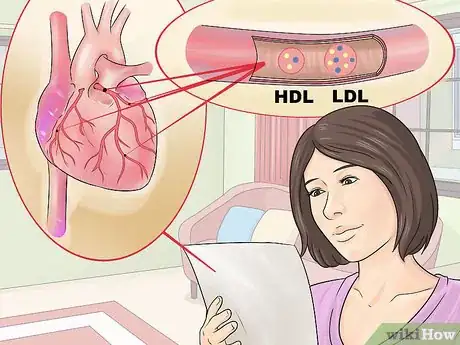
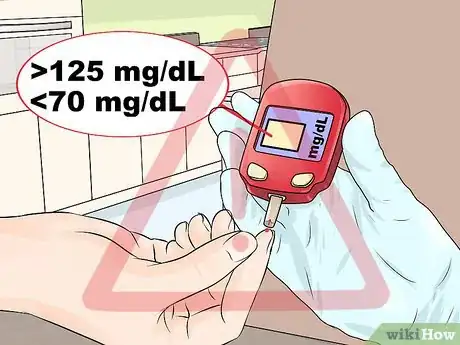
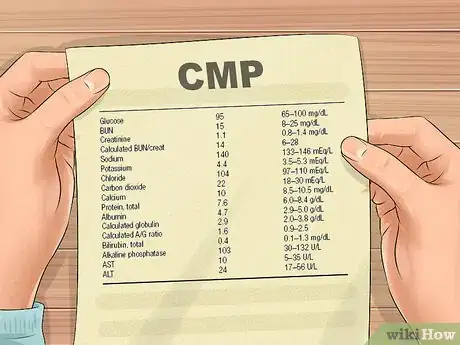


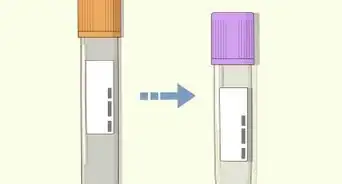




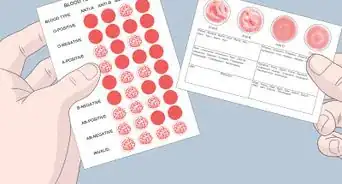


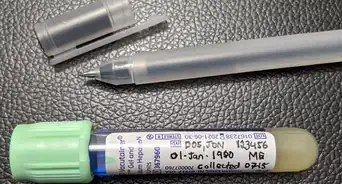












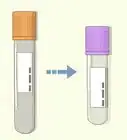




































Medical Disclaimer
The content of this article is not intended to be a substitute for professional medical advice, examination, diagnosis, or treatment. You should always contact your doctor or other qualified healthcare professional before starting, changing, or stopping any kind of health treatment.
Read More...